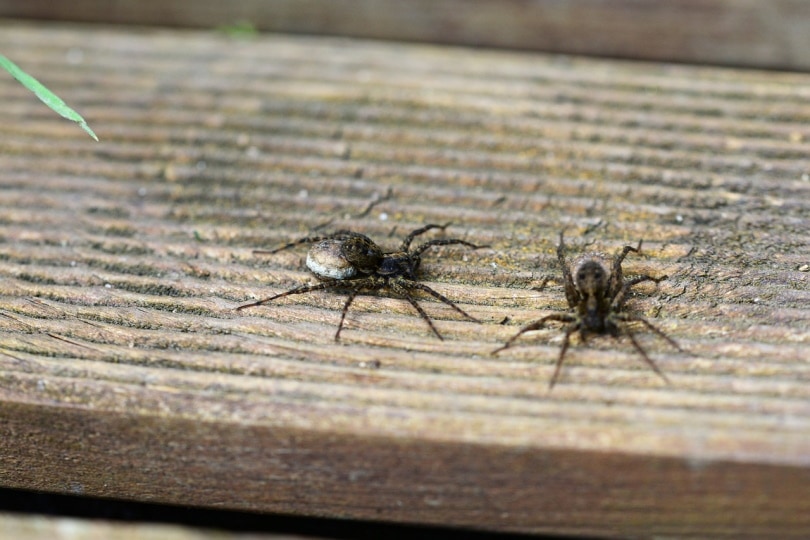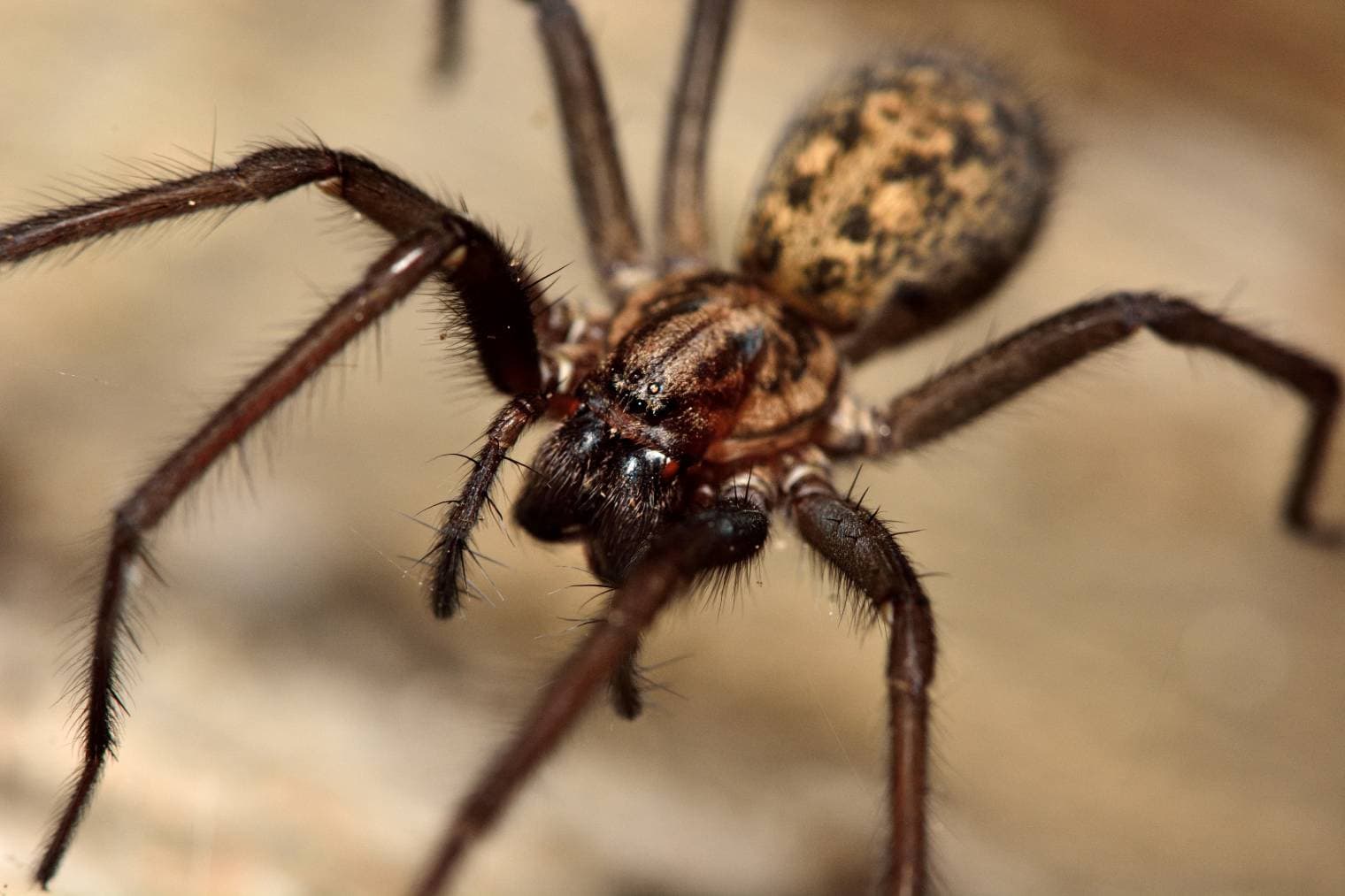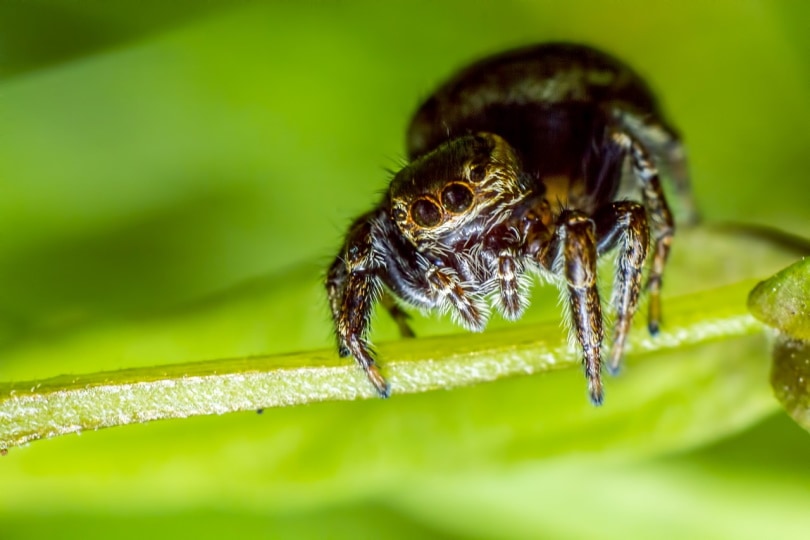
When you think of purring, you are likely to envision a cat lovingly rubbing up against you, or maybe you thought of the satisfying purr of a high-powered engine. One of the last things that may come to mind is a purring spider. Interestingly though, these fascinating eight-legged creatures can make a purring sound.
One species of spider, in particular, is responsible for this compelling information but it’s important to note that these spiders cannot purr in the same way that a cat can. Keep reading to learn more about this behavior and why they do it.
The “Purring” Spider
All kinds of animals, including those with many legs, use sound as a means of communication. Spiders, however, aren’t exactly known for making noises. This makes sense considering that spiders do not have ears or any other organs that can help them pick up sound.
Not having ears doesn’t mean you can’t make some noise though; certain species of tarantulas can make a hissing noise as a defense mechanism to ward off predators using a process called stridulation. Tarantulas aren’t the spiders known for purring though, that reputation goes to the wolf spider.
There are well over 2,000 different species of wolf spiders across the world, spread over 125 genera. The specific species that have been studied for “purring” is referred to by the scientific name, Gladicosa gulosa. These wolf spiders are native to the eastern United States and southeastern Canada, ranging as far west as the Rocky Mountains.
While they aren’t the only wolf spider species that exhibit this behavior, they have shed a lot of light on the science behind it.
How and Why Wolf Spiders “Purr”
The discovery of the wolf spider’s purring sound was thoroughly studied by a behavioral ecologist at the University of Cincinnati, Alexander Sweger. While biologists had theorized for many years that these spiders were using this behavior to attract mates, the studies conducted by Sweger and his team have yielded some very interesting information.
A male wolf spider’s sole purpose in life is to reproduce. There is a lot of pressure during the mating season. Many males that do not impress females during courtship are likely to suffer a tragic fate. In fact, one in five male wolf spiders is eaten by the female during the courtship process if he is not deemed a suitable mate.

The males in the study made this sound and it was discovered that the females involved were responsive to these tactics. But why use sound to lure in a mate if neither of you has ears? That was the question that plagued researchers. It turns out the audible sound was just the result of the male purposely creating vibrations to impress his potential mate.
You see, rather than hearing, a spider can sense vibrations through the hairs located all over its body. These senses are how spiders navigate through every aspect of their life including hunting, burrowing, self-defense, and mating. The males are simply creating a vibration using nearby objects to appeal to the female, the purring sound is just the audible result.
A Cat’s Purr vs A Spider’s Purr
The dictionary definition of the word purr is “the low, vibrating sound made by a cat by the contracting of the laryngeal muscles and the diaphragm as it breathes.” So, technically cats take the cake for the act of purring but any other sound resembling this is grouped into that category.
The purring of a cat is distinctly different from that of a spider, though it is all based on noise emitted by vibration. This makes sense considering the general makeup of these two species is vastly different. Now that we know why and how a spider can purr, we’ll touch on how and why a cat purrs.
How Cats Purr
Unlike spiders, cats do have vocal cords and the purr of a cat is a unique vocalization. The glottis is the space between the vocal cords, and the laryngeal muscles are responsible for opening and closing the glottis.
The purring sound is emitted by the signaling of both the laryngeal muscles and muscles of the diaphragm. Cats can purr during both inhalation and exhalation between 25 and 150 Hertz in a consistent pattern.

Why Cats Purr
Cats are known to purr during calm, positive interactions and in other situations where they are under stress. Purring is one of the many ways that cats communicate, and the reasons vary. Cats will purr to show contentment, to promote self-healing or pain relief, to calm themselves in a stressful situation, and to communicate with their young.
The reason behind this all comes down to Hertz. The frequency of a cat’s purr has been shown to stimulate muscles and promote the healing of bones, joints, tendons, and wounds. The purring also releases endorphins in both cats and their human companions, which can help ease stress and improve health.
Conclusion
Most spiders don’t make any noise at all and even if they do, it’s often too quiet for humans to hear. While spiders do not purr for the same reasons or in the same manner that cats do, male wolf spiders can emit a purring noise through the vibration of surrounding objects, which is used as a way to attract females.
Featured Image Credit: Mario Kirschbaum, Shutterstock








